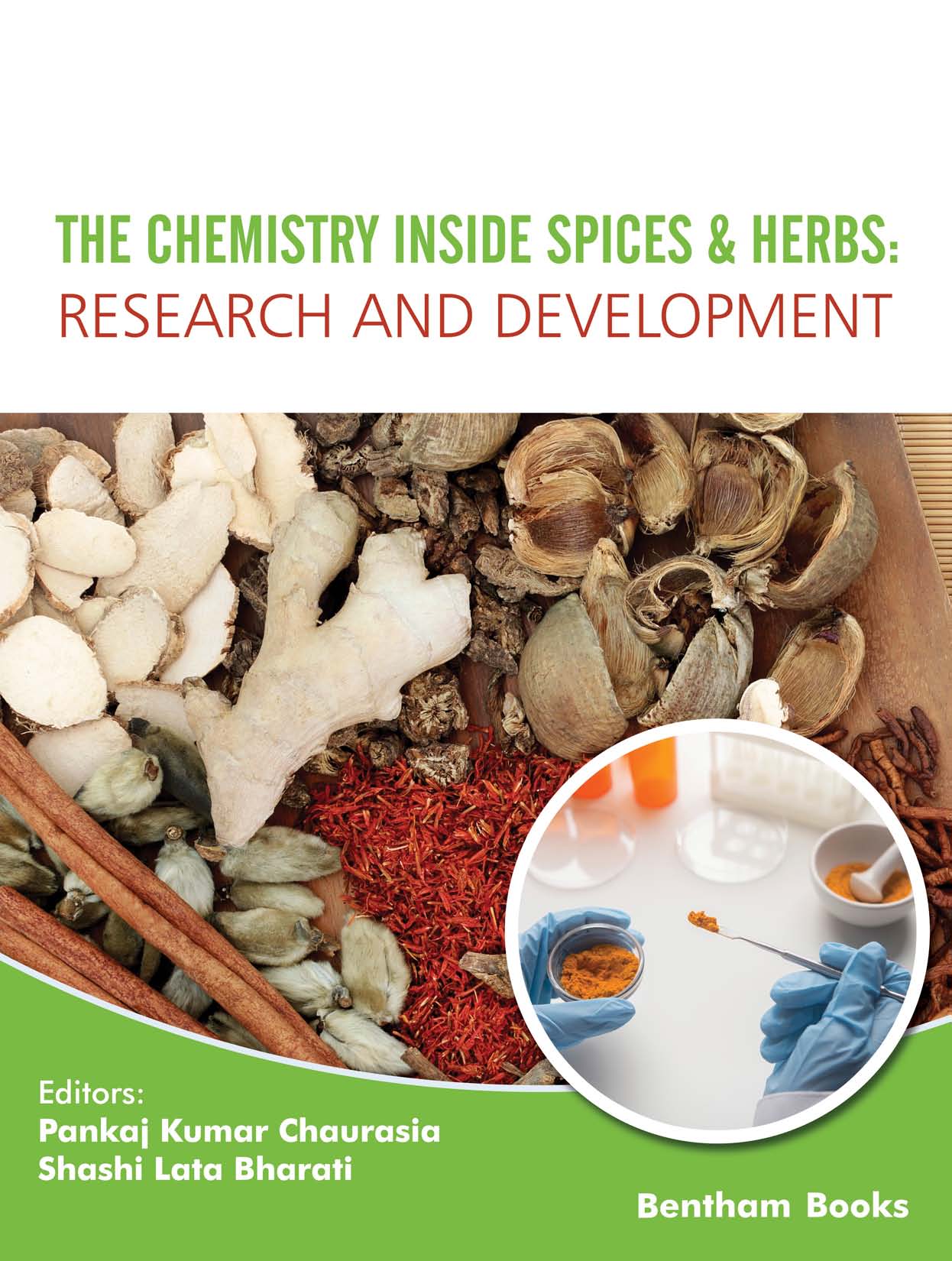Plants are the boon of nature on the earth for us in many ways. They detoxify the environments and save the lives living on this earth. Out of several advantages of plants, their different parts and/or substances are known for their noteworthy medicinal values. Spices and herbs which are involved in our daily routine life are the treasure of good health. Spices, a routine part of the kitchen, as well as herbs of our garden, are full of medicinal virtues and benefits and can be significantly used for the treatment of various disorders and diseases of humans. Spices are actually fruits, seeds, barks, roots and other parts of the plants widely used for enhancing the taste, color and quality of the foods (https://en.wikipedia.org/wiki/Spice) and are the source of various valuable chemical constituents of pharmaceutical significances while herbs are leafy green or flowering parts of the various plants with savory or aromatic properties (https://en.wikipedia.org/wiki/Herb). They are the major source of Ayurveda and other traditional culture of treatments and also have a great potential in the modern time. Spices and culinary herbs and their various chemical constituents involved in the treatment of various problems, diseases and wounds have been beautifully covered in this book.
In the present time of the serious pandemic COVID 19 period, demands of pharmaceutically valuable spices and herbs have been surprisingly enhanced all over the world because they have a substantial and valuable position as nutraceutical which doubtlessly are due to their significant healthy, nutritious and immunity boosting properties. Actually, the main objective of the construction of this book was to collect the more significant valuable researches and information on spices and herbs, which are being widely used in our daily life either in the form of taste enhancing savory materials or quality improving materials or beautiful home decoration and so on. Collection of weighty researches on biologically active pharmaceutically interesting chemical compounds and their compositions and structure activity relationships of these compounds was the second most interesting objective of this book.
This book is full of scientific knowledge on spices, herbs, associated internal chemistry and wide biological performances. It includes biochemistry and biotechnology of spices and herbs, antimicrobial properties, analgesics and anti-inflammatory agents, cure of neurobiological disorders, phenolic compounds, flavonoids, structure activity relationship, biologically active compounds and isolation, and so on.
This volume consists of total ten chapters and each chapter has been written by the various learned experts of their field. Learned experts come from different countries like India, Iran and Egypt. This unique collection of chapters may be highly beneficial for the students of graduate and post graduate level studying in the field of life sciences, biotechnology and biochemistry, plant sciences and for researchers and scientists working research in the field of spices, herbs, compounds with biological activity, natural treatment and natural pharmacology. The book is full of updated knowledge, information and recent researches, and without any doubt, it will be very much fruitful for the readers.
Chapter 1,
titled “Spices Biotechnology: Opportunities and challenges”, written by Hamid et al., provides an overview of various biotechnological solutions that increase the quality and productivity of spice plants.
Chapter 2, titled “Spices, the guards against the evil microbes: Antimicrobial properties of spices”, written by Jacob et al., highlights the effect of various spices on various micro-organisms, the various metabolites in spices that lend this ability and also reviews.
Chapter 3, titled “Spices and Herbs in the Treatment of Neurobiological Disorders”, written by Trivedi et al., deals with the role of spices and herbs for the cure of neurobiological disorders. Based on the investigations on herbal plants and neurological substrates in disease conditions, herbal medicines can be effectively used in the treatment of various neurological disorders.
Chapter 4, titled “Spices and Herbs in Bacterial and Fungal Resistance”, written by Trivedi et al., describes the use of spices and herbs against bacteria and viruses. The use of spices and herbs presents a great potential alternative or supplementary medicine to reduce side effects, progressively increasing the resistance of pathogens induced by the use of allopathic drugs.
Chapter 5, titled “Naturally Isolated Compounds from Spices and Herbs and their Medicinal Uses”, is written by Ramteke, A.M. This chapter includes a wide variety of isolated compounds such as phenolic compounds and flavanoids present in spices, which are now experimentally documented to possess antioxidant, anti-inflammatory, antimutagenic and anticarcinogenic activities. It also includes a list of spices compounds that are experimentally evidenced to control cardiovascular diseases, diabetes, cataract, cancer, etc.
Chapter 6, titled “Naturally-derived Analgesics and Anti-Inflammatory Agents”, written by Fayez et al., covers all the nutraceuticals and phytochemicals – derived from medicinal plants– which have been reported to possess analgesic and/or anti-inflammatory effects over the period between 2018 up to June 2020.
In Chapter 7, titled “Phenolic compounds and their Biological and Pharmaceutical activities”, Kumar et al. have summarized information on the biological and pharmaceutical activities related to different classes of phenolic compounds.
Chapter 8, titled “Structure Activity Relationship of flavonoids: An update”, written by Khare et al., focuses on the majority of polyphenols present in the daily diet, which mainly exist as glycosides with different sugar units and acetylated sugars at different positions of the polyphenol skeletons.
Chapter 9, titled “Biologically active compounds and Structure-Activity Relationship” has been written by Ganatra, S.H. He has discussed all three methods in detail, along with examples. It also provides the practical procedure to use available computational tools. The final aim of this chapter is not only to provide the theoretical background of drug discovery using structure activity relationships, but also to provide practical methods.
Chapter 10, titled “Turmeric Supplementation and Its Valued Clinical Connections”, demonstrates the renowned significance of turmeric in the treatment of various health issues and its role as a food supplement concisely.
Pankaj Kumar Chaurasia
PG Department of Chemistry, L.S. College,
Muzaffarpur, Bihar,
India
&
Shashi Lata Bharati
Department of Chemistry, NERIST,
Nirjuli, Arunachal Pradesh,
India

